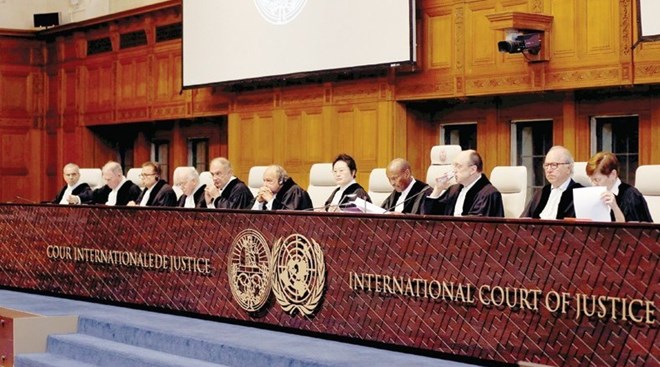
Monday March 15, 2021

The Foreign Affairs Ministry will today issue a statement on Kenya’s stand on the maritime dispute with Somalia that is before the International Court of Justice (ICJ).
A senior government official yesterday told The Standard that the ministry will be expressing displeasure with how the court is handling the case.
Kenya’s latest stand that it will not participate in the hearing today came after a week-long meeting held between government agencies and lawyers and the biggest concern was ICJ’s decision to hear the case despite protests on the impartiality of judges and the effects of Covid-19 on preparation of the case.
“Kenya believes that agreements must be performed in good faith. Kenya has always maintained its position that it did not consent to the court’s jurisdiction over disputes where it had agreed to other methods of settlement including the Memorandum of Understanding (“MoU”) of April 7, 2009,” the official said on condition of anonymity.
The government official asserted that nothing or anyone will alter Kenya’s maritime boundary, an indicator that the government may ignore ICJ’s decision and root for other options to defend herself.
He said: “It is important to emphasise and reassure the Kenyan citizens that the country’s sovereignty is not threatened at all nor will it be altered as a result of the court’s decision. The case, in particular, is aligned to the country’s sovereignty and territorial integrity. The outcome of the case further has a direct bearing on the national security of the country, a matter not taken lightly by the citizens of the Republic.”
Kenya is aggrieved that Somalia is emboldened by the fact that it has ‘friends of Kenya’ on Mogadishu’s list of those who have purchased oil wells in the contested area for exploration. Also at the heart of Kenya’s protest is the presence of Justice Abdulqawi Ahmed Yusuf in the case. Ahmed is a Somali national.
The official disclosed that several international oil companies are interested in oil and gas in the region. These include Agip Africa Ltd (ENI), Amoco Somalia Petroleum Co (BP), International Petroleum Corp (Talisman), and Murphy Eastern Oil Company (Murphy).
Others are Gulfstream Resources Canada (Anardarko), Neste OY, Chevron Corp, Continental Oil Corp (Conocophilips), Philips Petrol Corp Somalia (Conocophilips), BG Somalia AS (BG Europe), Japan Energy Corp (JEC), Amsas Consulting Somalia Ltd (Amsas Consulting PTY Ltd), Mobil Somalia (ExxonMobil) and Pecten Somalia (Shell Ltd).
A document dubbed ‘Offshore Somalia 2019’ and leaked from Somalia’s Ministry of Petroleum and Mineral Resources showed five oil blocks in Lamu are a part of those Somalia has floated to investors.
Somalia floated for auction 15 blocks. Those offered for auction include blocks 131, 142, 152 and 153 located in Galmudug and referred to as Obbia Basin, blocks 164, 165, 166, 177, 178 and 179 in Hirshabelle referred to as the Coriole Basin, and blocks 189, 190, 204, 218 and 219 located on the Lamu Basin, which is Kenya’s territorial waters.
The document detailed a plan with January 1, 2020 as the date the successful bidder would start exploration.
“The exploration block map is ready. The area of each block is maximum 5,000km square and represents one PSA,” the document reads in part. It emerged that Somalia had also reached out to firms that had cut ties with her to restart exploration.
The document showed prior to the breakdown of Somalia in 1991, giant international oil companies had taken possession of large acreage of its onshore territory. Exploration had started with 40 oil wells drilled.
Somalia officials, while offering tenders for hydrocarbon exploration in February 2019 in London, informed bidders that previously gathered seismic data was incorrect due to the use of wrong geologic models.